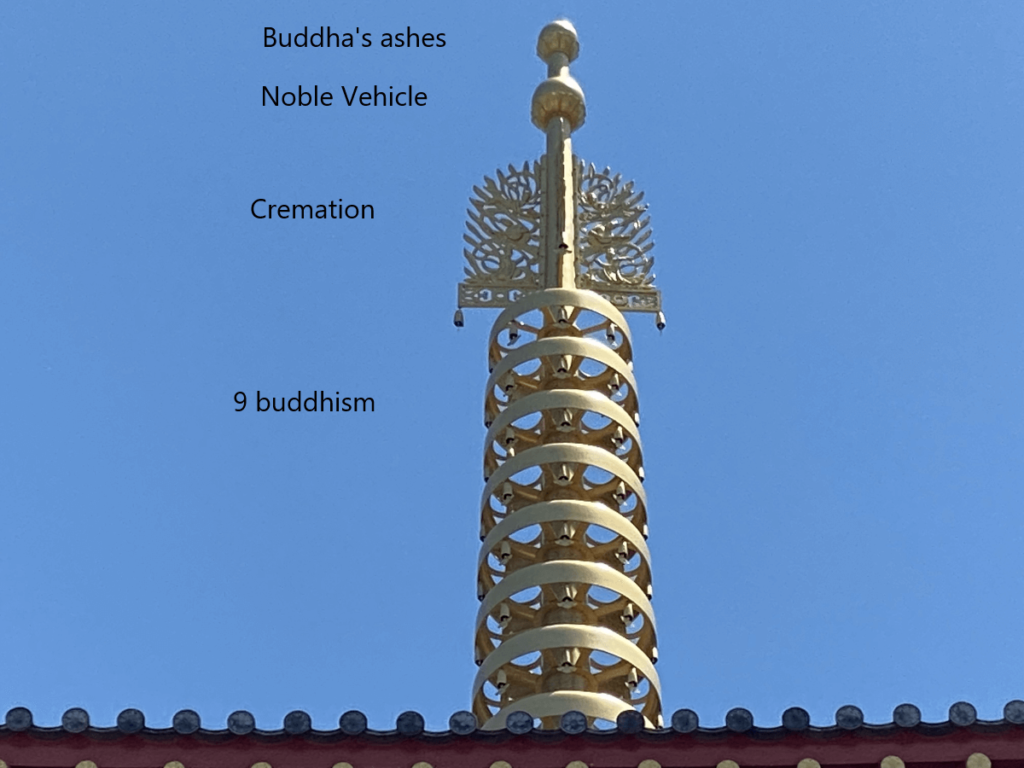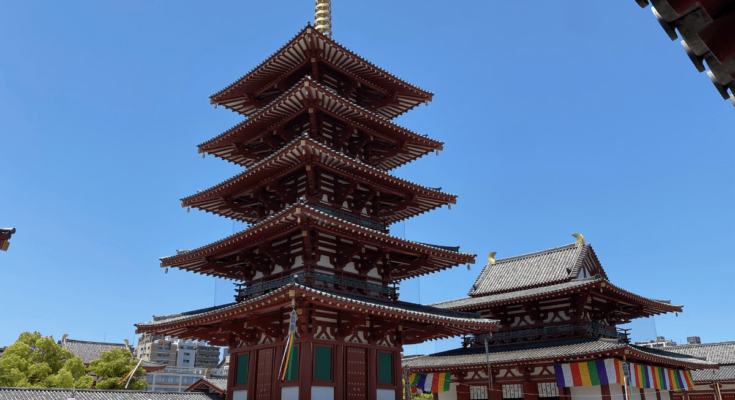There are many three- or five-storied pagodas in Japanese temples. This style was introduced to Japan (and South Korea) from India via China. The Indian original was made of stone. However, due to the humid weather in Japan and the earthquakes that frequently occur in Japan, wood was chosen instead.
Construction systems are said to have many ways to reduce the effects of earthquakes. In reality, it’s not a five-storied structure but a very tall one-storied structure with a five-storied roof on the outside. It has a very thick central pillar. When an earthquake occurs, each floor sways to the other side because the floors are purposefully not connected tightly to the frame, and the thick central pillar reduces the sway. The roof gradually becomes smaller from bottom to top. Its shape is like a pendulum. Ancient pagodas have remained this way for centuries, even in modern-day Japan.
However, the construction system is believed to be primarily religion-focused. The pagoda shows the tomb of the Buddha. Each story means the earth, water, fire, wind, and sky. They all symbolize the Buddhist philosophy of the universe. Over time, they have become taller and taller, likely as a symbol tower of the temple. Why? The reason may be similar to why European Gothic churches are becoming taller and taller, all pointing towards heaven.
相輪・Sourin

This unique decoration on the top of the five-storied pagoda is called a Sourin. It’s said that the origin was an umbrella on the top of the relics of Buddha when Buddha passed away. The umbrella protected Buddha’s remains because of the hot climate in India. That entire shape indicates the place of relics of Buddha. And each part means Buddha’s ashes, noble vehicle, cremation, 9 Buddhism, and water lilies.
If you get a chance to visit a Japanese temple, please try to see it.
I live in Osaka. I’m a volunteer guide trainee. I want to take you to many good sightseeing spots when you visit Osaka!





 HTJ has a YouTube page! Check it out
HTJ has a YouTube page! Check it out